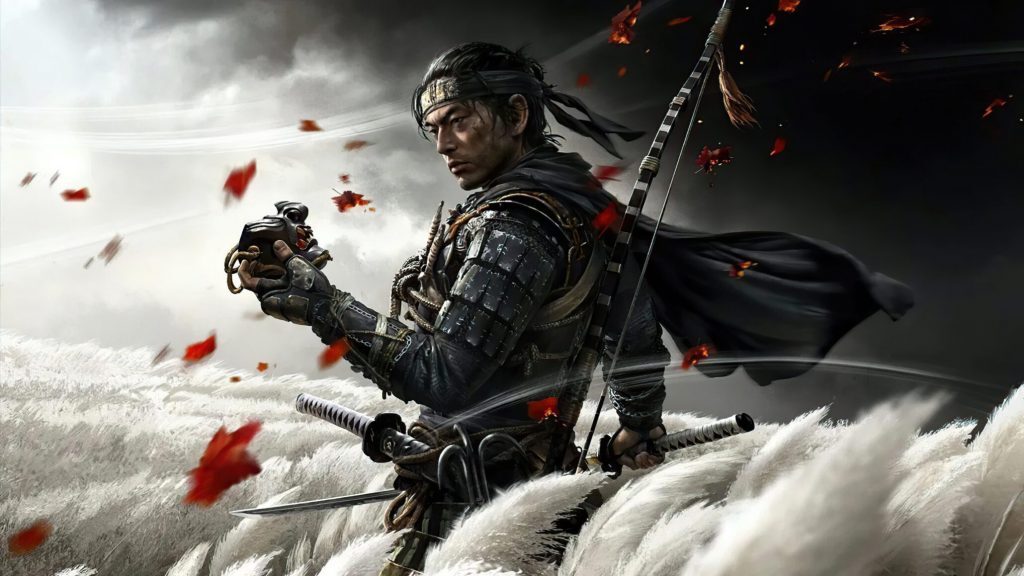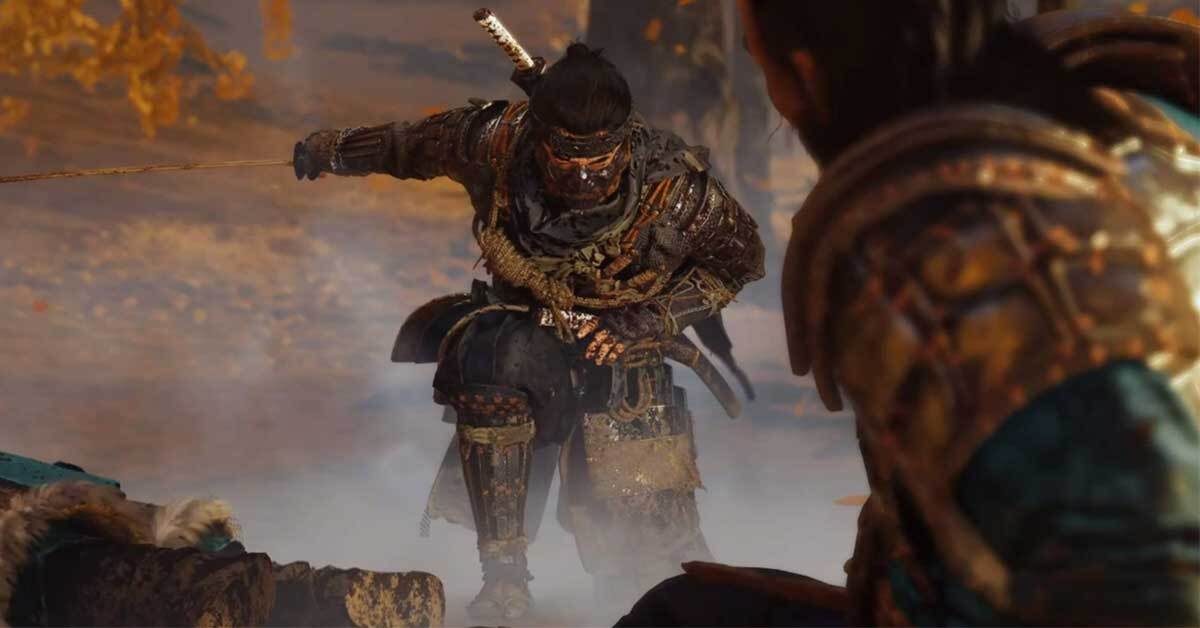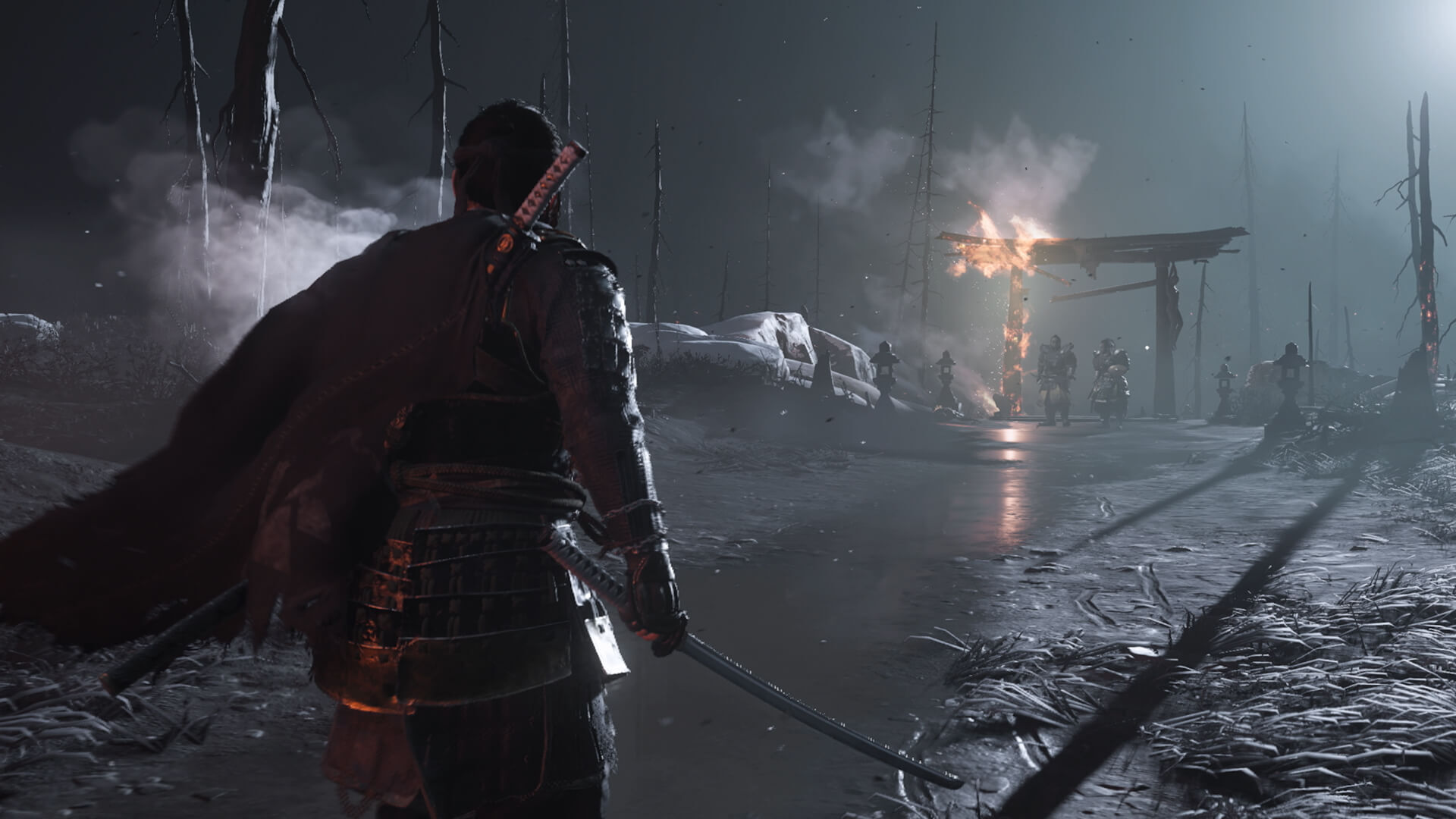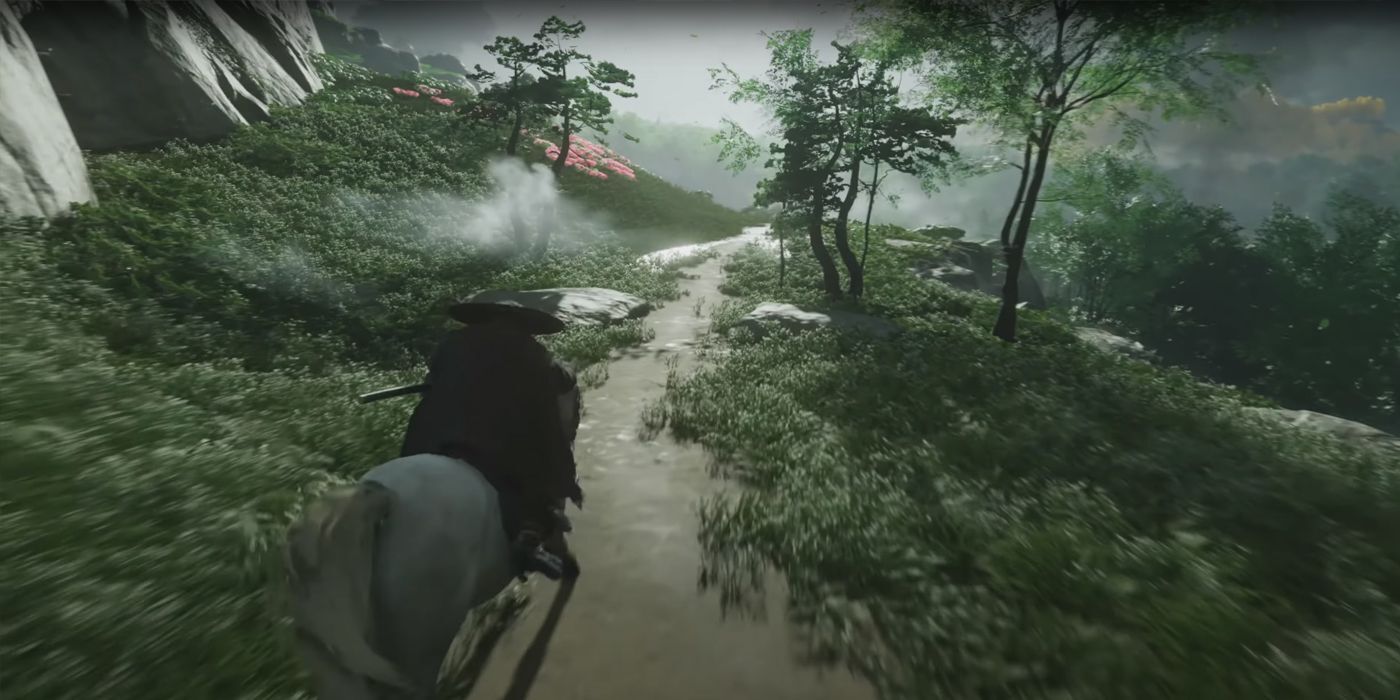Describing Ghost of Tsushima as "another one of those" feels incredibly apt. In many ways, Sucker Punch has made the "Assassin's Creed in Japan" that people have been craving for years now. It plays it safe in it's design, never offering much in the way of invention or innovation but rather sticks to what has worked before. Fortunately, it's able to take that pre-existing and arguably stale format and use it very well but at the end of the day, Ghost of Tsushima probably isn't going to stick with me. It's another drop in a pool of open-world games, a genre that really should have learnt from Breath of the Wild in terms of recreating both itself and the genre.
-
Story
-
Visuals
-
Audio
There’s something to be said about not reinventing the wheel. There’s a reason we still use them in an almost unaltered state since some clever caveman thought it would be a genius idea to sand down a rock in a very specific way. Sure, we’ve rebuilt and modernised, chopped and changed aspects but at its core, it’s still just…a wheel. I think that analogy rings true for Ghost of Tsushima, a game that sells itself more on visual flair and style than substance because at it’s core…it’s actually just more of the same.
Mechanically solid, stylistically impressive and graphically competent, Ghost of Tsushima is happy to just exist as a very by-the-numbers open world game, never really doing anything new or fresh. Which is fine! Sucker Punch, the development team behind the the final big PS4 exclusive, made a name for themselves by developing plenty of solid open-world games. It’s just a touch disappointing that they didn’t really do anything new with their most recent attempt.
Sticking to the Code
Modelling itself very explicitly on the samurai movies of acclaimed director Akira Kurosawa, Ghost of Tsushima tells the story of Jin Sakai, one of the last few samurai still standing after the Mongols invade his home. It’s up to him to gather the forces he needs to save what remains of his family and take back Tsushima from a force that acts as a foil to the overly-honourable and dignified samurai. Jin is forced to adapt to the situation, having to use methods which would be frowned upon by his order in order to challenge the brutally savage Mongols. It’s a divide that enables two distinct modes of gameplay, one being the stealthy ghost approach which focuses on assassinations and taking out enemies without looking them in the eye and the more direct combat approach, which sees Jin taking on dozens of foes at once with some flashy sword slashes and parries.
While having the option to choose how you approach the game is welcome, it’s clear which side the developers gave the most love. Playing stealthily forces Jin to break his code and while you’re not punished for this, the game constantly reminds you that it’s not the samurai way. Which is actually fine, as the stealth elements are nowhere near as polished and engaging as head-on combat.
Fights usually start with a stylish and satisfying stand-off which can see Jin dispatching entire groups of enemies with just a few button presses. Combat is meaty and satisfying, with every hit causing blood to splash and squirt with some technically impressive animations. A variety of unlockable stances which are effective against different enemy types ensure that the game is able to craft a wide array of different encounters, meaning you’ll actually be forced to pay attention to who you’re fighting rather than just mashing a single button until everyone is dead. Again, it’s nothing inventive but it’s handled so well that it hardly matters.
Are you a model?
Yet where Ghost of Tsushima really shines are its visual and stylistic presentation…if you don’t look too closely. The landscapes and environments in this game are absolutely magical, with some of the most beautiful vistas I’ve seen in a game for a very long time. Yet beyond that, the recreation of old samurai movies in the cutscene angles, bossfight arenas and lighting and particle effects make Ghost of Tsushima an absolute dream to look at. The developers know they’ve made an excellent looking game too as they’ve included a spectacularly in-depth photo mode for players to capture all the gorgeous screenshots they could want. Admittedly, I didn’t put too much time into this mode as taking photos in games has never really appealed to me. Yet one need just search for the game on Twitter to see what people are able to capture with all those dynamic settings.
Having said all that, while the game’s environment’s looks stunning, smaller details often feel average at best. Facial capture aside, some animations look choppy and wonky in action, while character models look strangely…dated. Like they were built in 2015 and never really updated. Which isn’t to say they look bad, they’re definitely acceptable, but when you have the kind of visual fidelity seen in The Last of Us Part II just a few months back as a baseline, it seem slightly overlooked.
Checking off the to-do list
Yet where Ghost of Tsushima lost me faster than any other component was the amount of dated open-world tropes it lobs into its gameplay loop. The map, which is impressively large in its scale, is littered with enemy camps, fox dens, shrines and all manner of arbitrary tasks and chores that make all your meters and abilities gradually increase. I understand the inclusion of side-activities like this: people enjoy all the extra content. Yet none of it felt especially rewarding; going off to an unexplored area only to discover the same fox den “quest” I’ve already done fifteen times over makes me not see the point in exploring this intricately crafted world. Discovery means nothing if it’s just “another one of those”. I eventually got tired of all the pointless tasks and mainlined the story, something I found much more satisfying as the story in Ghost of Tsushima can be rather touching when it’s not being a story about revenge and redemption. Don’t get me wrong, those aspects are compelling too but it’s the quieter moments of reflection and introspection that Jin undergoes that really sold the narrative for me.
Verdict
Going back a few lines, describing Ghost of Tsushima as “another one of those” feels incredibly apt. In many ways, Sucker Punch has made the ‘Assassin’s Creed in Japan’ that people have been craving for years now. It plays it safe in its design, never offering much in the way of invention or innovation but rather sticks to what has worked before. Fortunately, it’s able to take that pre-existing and arguably stale format and use it very well but at the end of the day, Ghost of Tsushima probably isn’t going to stick with me. It’s another drop in a pool of open-world games, a genre that really should have learnt from Breath of the Wild in terms of recreating both itself and the genre. One can only hope the next generation of consoles prompts developers to final abandon the tired traits of early 2010’s open-world games for something fresher.







